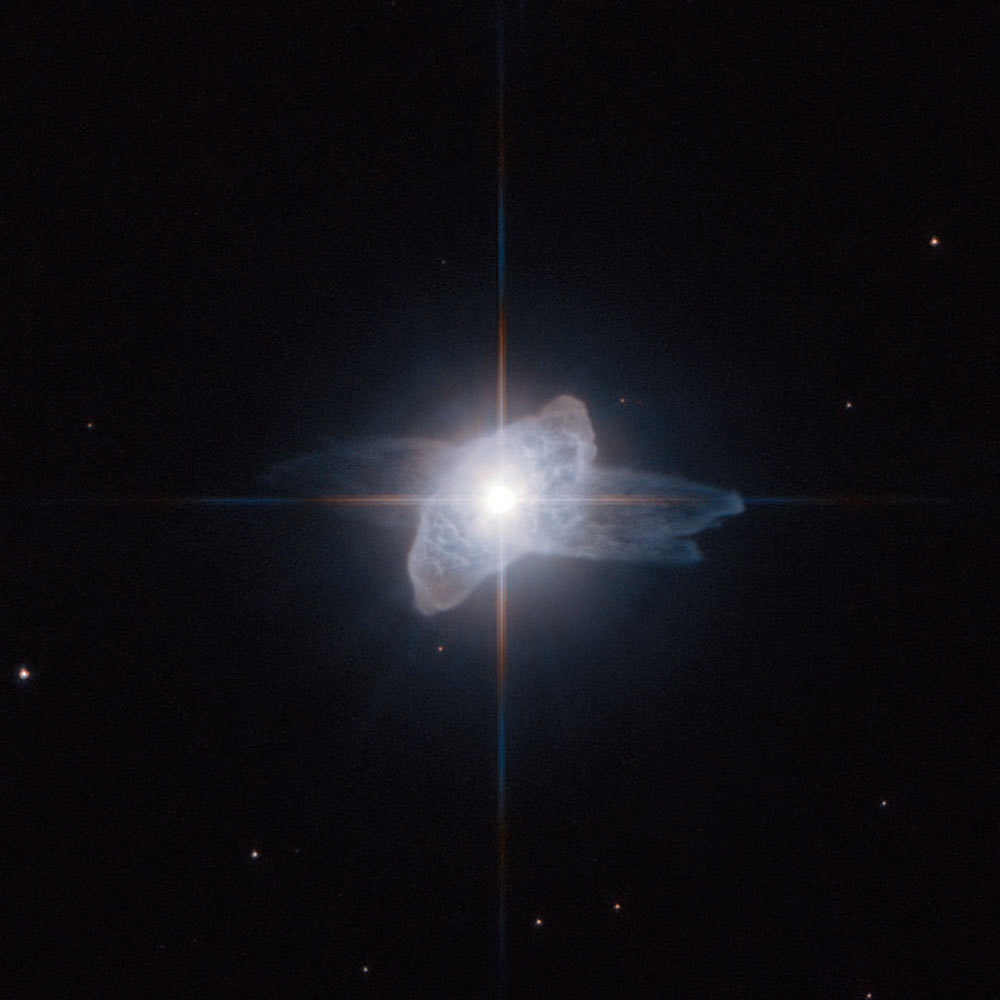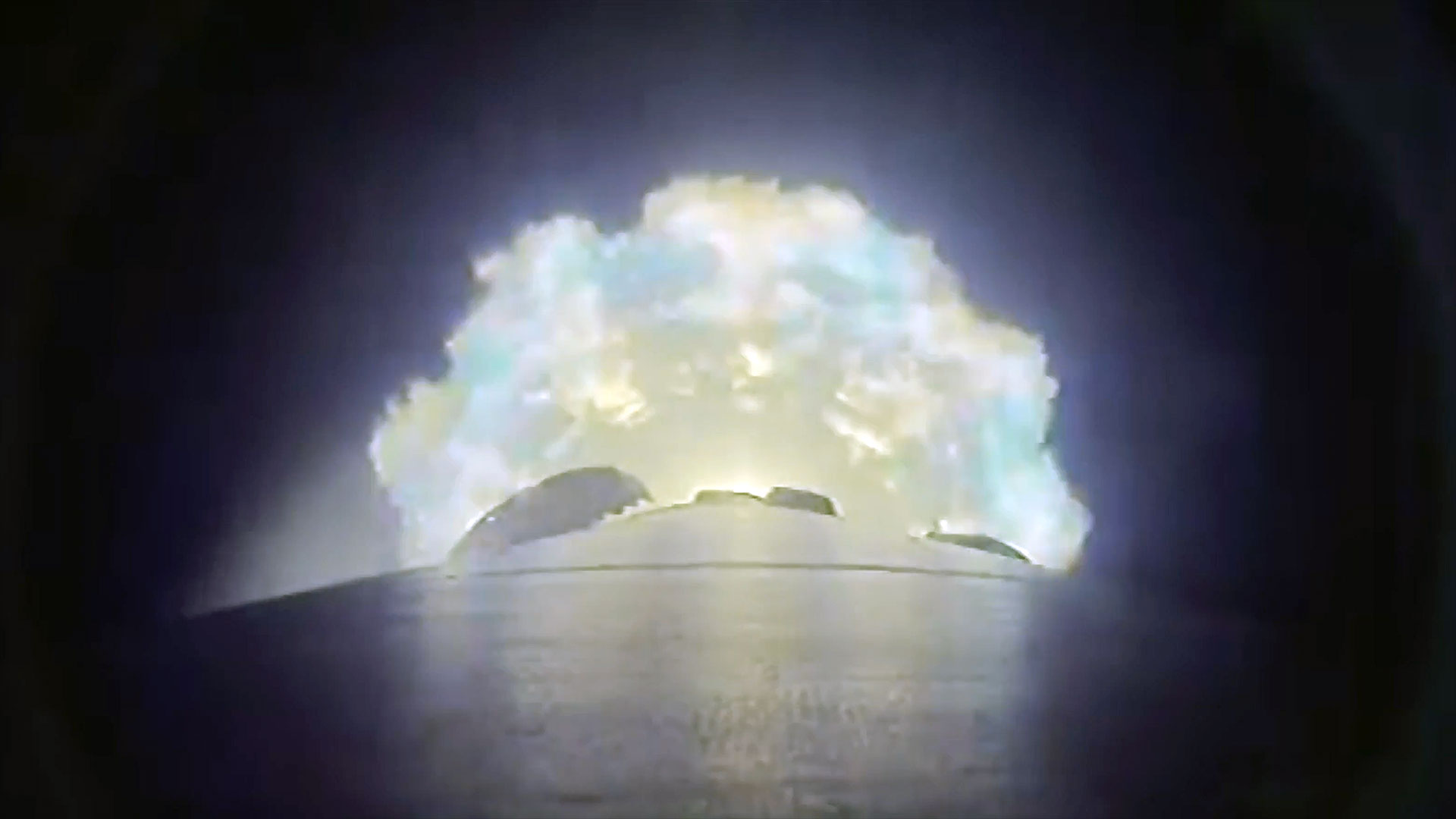Doomed Star Sheds Gassy Skin Before Death

Adoomed star has been caught in the act of shedding itsgassy skin in a new photograph from the Hubble Space Telescope.
Thenew Hubblephoto of the dying star reveals anodd cloud of gas around the object that is actually the outer layers ofthestar's atmosphere, which are being blown out in jets to create vastlobes inspace. While beautiful, the lobes are rare, short-lived formationsaround thestar and are a telltale sign that death looms near, astronomers said.
"Asstars similar to the sun age, theyswell into red giant stars,and when this phase endsthey start to shed theiratmospheres," Hubble telescopescientists said in astatement.
Thesun is about 4.6 billion years old, and is expectedto last another 5 billion years before puffing up into a red giant anddying.
Thenew Hubble photo, released Tuesday, shows the starIRAS 19475+3119, which sits about 15,000 light-years from Earth in theconstellation Cygnus (the Swan). Two different lobe-like gas shellsfrom thestar's atmosphere ? each positioned at a different angle ? can be seenin thephoto. [MoreHubble telescope photos]
Thisstar was first spotted in 1983 by the IRASsatellite, which detected the intense infrared emissions coming fromtheobject. But the future is bleak for the star.
Asthe star continues to shed its atmosphere, its hottercore will eventually be revealed, Hubble scientists said. When thathappens,the gas surrounding the star will begin glowing brilliantly to create aplanetary nebula.
Breaking space news, the latest updates on rocket launches, skywatching events and more!
Despitetheir name, planetary nebulashave nothing to do withalien planets. They got their titlebecause of their fuzzyplanet-like appearance when viewedthrough small telescopes.
Butthe IRAS 19475+3119 isn't completely dead yet.Currently, it is what astronomers call a protoplanetary nebula.
Astronomersused Hubble's Advanced Camera for Surveys totake the dying star's portrait. The once-broken camera was fixed in May2009during NASA's final repair mission to Hubble by astronauts.
- TheStrangest Things inSpace
- Images? Hubble Telescope'sSpectacular Photos
- Gallery? Great Nebulas in Space

Space.com is the premier source of space exploration, innovation and astronomy news, chronicling (and celebrating) humanity's ongoing expansion across the final frontier. Originally founded in 1999, Space.com is, and always has been, the passion of writers and editors who are space fans and also trained journalists. Our current news team consists of Editor-in-Chief Tariq Malik; Editor Hanneke Weitering, Senior Space Writer Mike Wall; Senior Writer Meghan Bartels; Senior Writer Chelsea Gohd, Senior Writer Tereza Pultarova and Staff Writer Alexander Cox, focusing on e-commerce. Senior Producer Steve Spaleta oversees our space videos, with Diana Whitcroft as our Social Media Editor.
